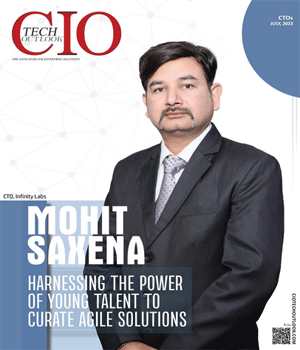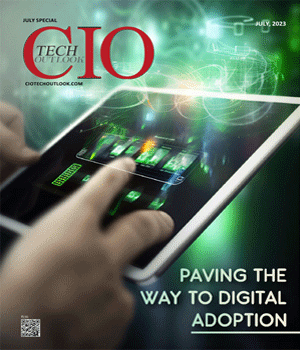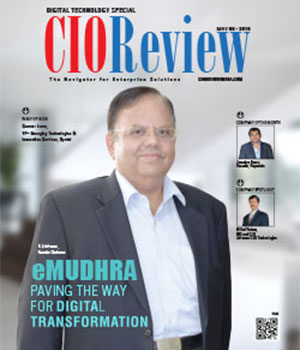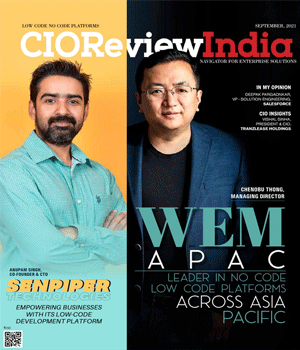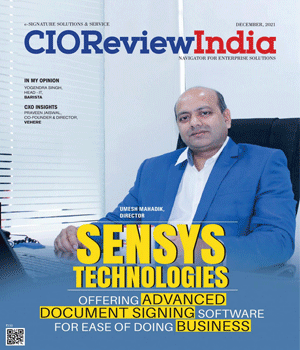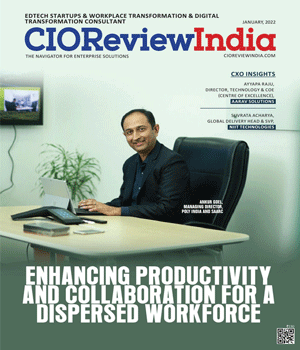
Rethink your Enterprise to Attract Digital Age Customers
Sameer Arora, VP-Emerging Technologies & Innovation Services, Syntel
 Digital is front and centre in almost every CXO conversation across the globe. The digital age is the outcome of the convergence of consumer technologies like mobility, social media and analytics, coupled with infrastructure advances like cloud computing and the increased availability of high speed 3G/4G and broadband networks.
Digital is front and centre in almost every CXO conversation across the globe. The digital age is the outcome of the convergence of consumer technologies like mobility, social media and analytics, coupled with infrastructure advances like cloud computing and the increased availability of high speed 3G/4G and broadband networks.
However, just launching a mobile app will not propel a company into the digital age. To achieve sustainable success, they need to adopt a holistic approach and go beyond the technology. They need to fundamentally rethink every aspect of their organization, including their business model, strategy, culture, people and processes.
Innovative companies like Amazon, Apple, Google and PayPal have capitalized on this technology explosion to build disruptive business models which have challenged incumbents across multiple industries.
Start with your Future Customer
Digital age customers are wired differently and their behaviour often defies conventional wisdom.
They are better informed about the product, price and quality, they are influenced by peers rather than advertisers, they prefer texting to talking, their notion of customer experience revolves around simplicity, and their views on personal space and privacy are very different than previous generations.
Every digital transformation initiative needs to begin with your Future Customer. The strategy and execution must be aligned to your organization’s understanding of the Digital age Customer.
Modernize the Enterprise to go Digital
When it comes to enterprise digital transformation, the integration of digital systems with legacy systems cannot be achieved with patchwork, band-aid type solutions. It requires a fundamental rethink of the business and technology architecture of the enterprise.
The initial focus of digital initiatives has largely been around enabling new channels like mobility and social, as well as designing high quality customer experiences. But true digital transformation requires going beyond the channels to modernize the enterprise architecture to keep pace with the demands of the digital consumer.
Forrester Research, in its predictions for 2016, stated that “Customer Experience cannot improve without transforming the backend transaction
processing systems”.
Digital transformation cannot be limited to customer facing parts of the enterprise, but needs to extend across the enterprise to modernize core systems and processes that impact customers, employees, business partners, and other internal and external stakeholders.
IT partners need to move beyond the CIO organization and build deeper relationships with business stakeholders to understand the real drivers of the digital imperative. They also need to engage in “possibility thinking” conversations to adopt innovative thinking from digital pioneers in other industries.
Don’t Digitize Inefficiency
In large technology transformations, companies typically map existing business requirements to software capabilities. Furthermore, they customize the software to meet these “unique” business needs, which often results in automating rigid, inefficient and flawed processes.
Digitizing processes without redesigning them to keep up with dynamic market conditions will have a limited impact on business performance, which should be the ultimate goal of every technology program.
Organizations need to think of software systems as continuously evolving products which are designed for agility, rather than as static entities. Agile thinking will enable technology systems to evolve continuously and stay abreast or ahead of the dynamic changes in the business marketplace.
Get a Grip on Your Data
The ability to manage and understand data across multiple internal and external sources is one of the biggest challenges facing today’s companies.
Digital pioneers have built capabilities to analyse vast streams of information in near-real time to personalize customer experience. These capabilities can provide personalized recommendations based on a customer’s browsing pattern and purchase history. They can also deliver personalized offers to a smart phone by combining location and time tracking information with the customer’s likes and preferences.
As always, the first step in this journey is to develop a 360 degree view of the customer across internal and external systems. This holistic, dynamic profile is the starting point for deriving insights which will enable digital processes to deliver a unique personalized experience to every customer.
Ignore Security at your own Risk
Executives need to consider security as an integral part of the SMACI stack – and perhaps we should rename it S2MACI.
The rapid growth of digital technologies is exposing companies to a whole new set of security threats, and mobile apps are easier, cheaper, and faster to deploy than conventional enterprise systems. This proliferation of mobile apps poses a major security threat for many companies, especially if these apps are connected to back-end transaction systems with sensitive customer information.
Similarly integration of smart devices into the corporate network will bring forth a new set of technologies with their associated integration and security challenges. Organizations need to have a centralized governance mechanism to manage the development and deployment of mobile apps and smart devices with the same level of rigour as enterprise applications
Every Business is Digital
A recent McKinsey report asserted that technology accounted for 40 percent of capital investments in the US. The technology intensity is increasing in every industry.
Tesla has proved that even an automobile can be reimagined and built as a computer on wheels. Every business is a digital business. The only variable is the pace of adoption across different industries.
CIO Viewpoint
Why Foolproof Facial Recognition Is Key Against...
By Joseph Sudheer Thumma, Global CEO & MD, Magellanic Cloud
National Technology Day 2025: Powering Progress...
By CIOTech Outlook Team
Aligning IT Roadmap with Business Objectives: A...
By Subhash singh Punjabi, CISO & Head Enterprise Architecture, Deepak Fertilisers & Petrochemicals Corporation Ltd
CXO Insights
Revolutionizing Small-Scale Electronics:...
By Dr. Prince Joseph, Group CIO, SFO Technologies
Accelerating India's Digital Renaissance...
By Tak lee, CEO and Managing Partner, Hashedem
How leveraging technology solutions automates...


